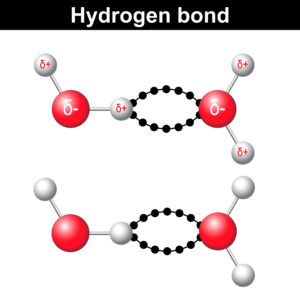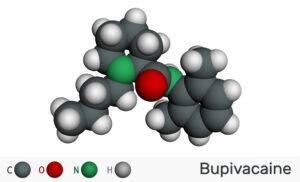Our Blog

Phase 2 Neuromuscular Block
Neuromuscular blocking drugs are used induce temporary muscle paralysis in various medical and surgical settings. Most commonly, these drugs facilitate endotracheal intubation and mechanical ventilation,

Inhalational Anesthetics: An Overview
Inhalational anesthetics are a group of medications used to induce and maintain general anesthesia during surgical procedures. These drugs are administered through the respiratory system,

Comparison of Anesthesia Strategies for Cataract Surgery
Cataract surgery, one of the most frequently performed procedures in the world, is generally quick, safe, and effective. However, ensuring patient comfort and cooperation during the operation remains a critical concern.

Can Postoperative Inflammation Predict Respiratory Complications After Cardiac Surgery?
Anesthesia and critical care teams constantly seek better ways to predict which patients may struggle with recovery after major surgery. A new study published by

Preoperative vs. Postoperative Anti-Emetics
Postoperative nausea and vomiting (PONV) remains a significant challenge in perioperative care, often leading to prolonged hospital stays and decreased patient satisfaction. The use of

AI in Health Administration
The integration of Artificial Intelligence (AI) in health administration is driving rapid change in the healthcare sector, with the goals of enhancing efficiency, reducing costs,

Propofol’s History in Medicine
Propofol is a widely used intravenous anesthetic agent. Its rapid onset, short duration of action, and ability to provide deep sedation make it an essential

Uncommon Side Effects of Anesthesia
Anesthesia allows surgery and other medical procedures to proceed while minimizing pain or distress for the patient. While it is generally safe and effective, anesthesia

Defasciculation in Anesthesia
Defasciculation in anesthesia refers to the administration of a non-depolarizing neuromuscular blocking agent prior to the administration of succinylcholine, a depolarizing agent commonly used for

Uses of Topical Anesthesia in Surgery
Topical anesthesia is useful in many areas of surgery, providing a localized solution for pain management during various medical procedures. Unlike general anesthesia, which induces

Respiratory Support After Extubation
Extubation is the process of removing a patient’s endotracheal tube after mechanical ventilation, either due to their medical condition or general anesthesia for surgery. Successful

Does Adding Propofol to Volatile Anesthetics Decrease the Incidence of PONV?
Postoperative nausea and vomiting (PONV) are common and distressing side effects of anesthesia that significantly impact patient satisfaction and recovery times. Various strategies have been

Indications for Intravenous Albumin
Albumin, a naturally occurring protein produced by the liver, plays a crucial role in maintaining oncotic pressure and transporting various substances, including hormones, drugs, and

Uses of Dexamethasone
Dexamethasone is a potent corticosteroid used in the treatment of aggressive inflammation. Inflammation is present in many serious diseases, including cancers, autoimmune disorders, and infections.

Labor Analgesia
Labor is a profound and unique experience characterized by intense physical and emotional challenges, primarily due to the significant pain associated with childbirth. Managing this

Effects of the Prone Position on Intraoperative Respiratory Mechanics in Patients with ARDS
Acute Respiratory Distress Syndrome (ARDS) presents significant challenges in critical care, particularly concerning respiratory management. In recent years, prone positioning has been recognized as a

Reducing Maternal Mortality from Peri-partum Hemorrhage
Peripartum hemorrhage (PPH) remains one of the leading causes of maternal mortality worldwide, particularly in low and middle-income countries. This severe complication, which occurs just

Navigating Anesthesia for Obstetrics
Pregnancy and childbirth are profound experiences, marked by a myriad of emotions and complexities. Amidst the anticipation and excitement, ensuring the safety and comfort of

Acute Respiratory Distress Syndrome
Acute Respiratory Distress Syndrome (ARDS) is a severe lung condition characterized by rapid onset of widespread inflammation in the lungs. It is a life-threatening condition

Gender Differences in Overdose-Related Deaths
The opioid crisis has swept across nations, wreaking havoc on communities, families, and individuals. As researchers and policymakers grapple with this pressing issue, it becomes

Acid-Base Physiology
Acid-base physiology is a complex but integral component of human physiology that involves the regulation of the concentration of hydrogen ions (H^+) in body fluids.

Liposomal Bupivacaine
Liposomal bupivacaine presents a promising approach to postoperative pain control. This innovation exemplifies the scientific strides made in understanding the biology of pain and devising

The Scope of Anesthesia Practice
Anesthesia, a crucial component of modern healthcare, is the practice of administering medications to induce a temporary state of loss of sensation or awareness in

Spinal Anesthesia for Cesarean Section
Spinal anesthesia is a commonly used anesthetic technique for cesarean section (C-section) deliveries. It involves the injection of a local anesthetic agent into the cerebrospinal